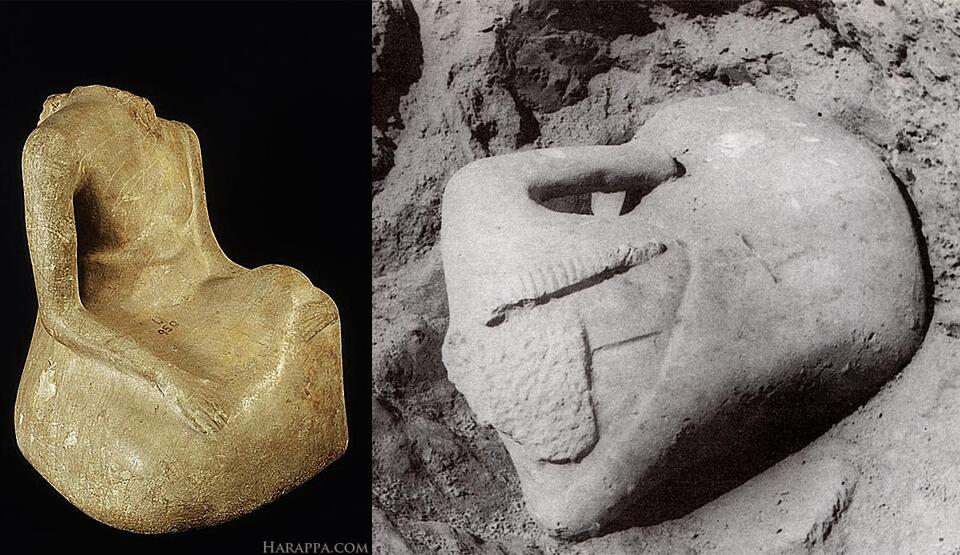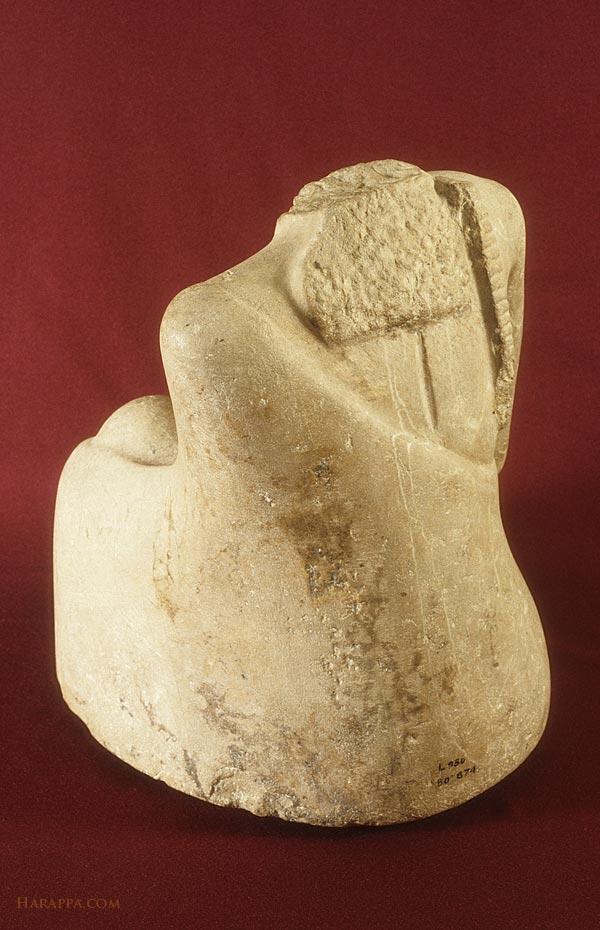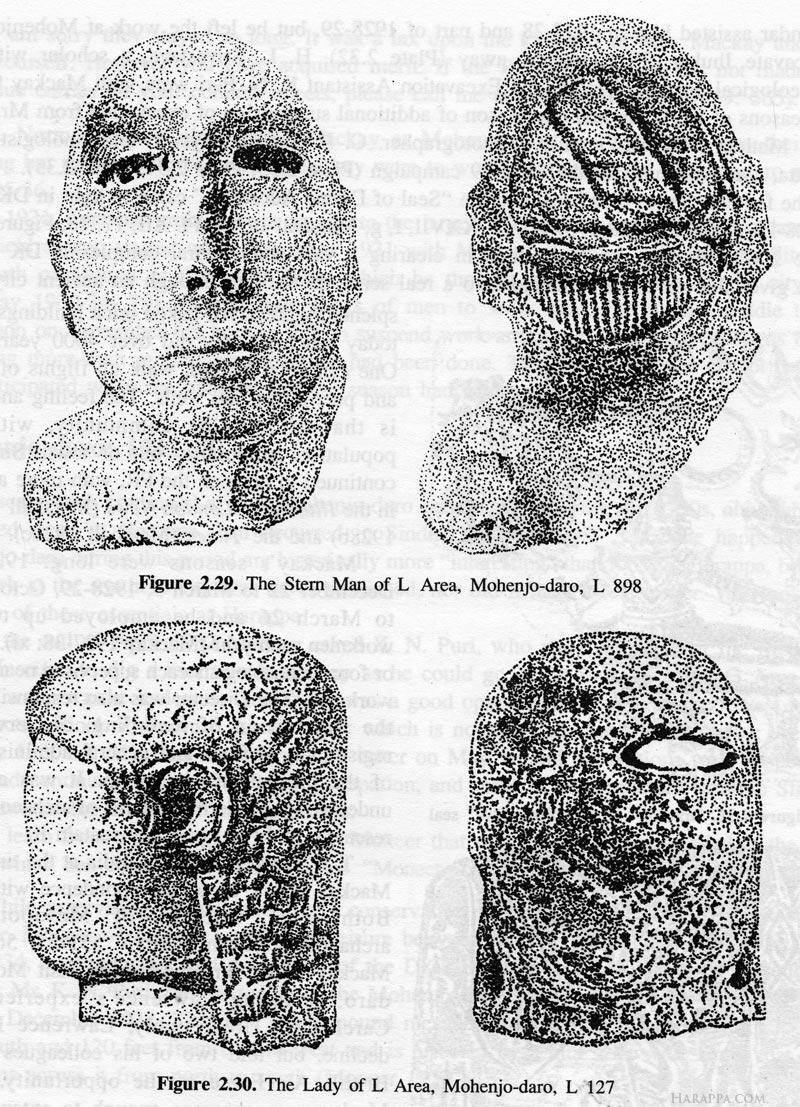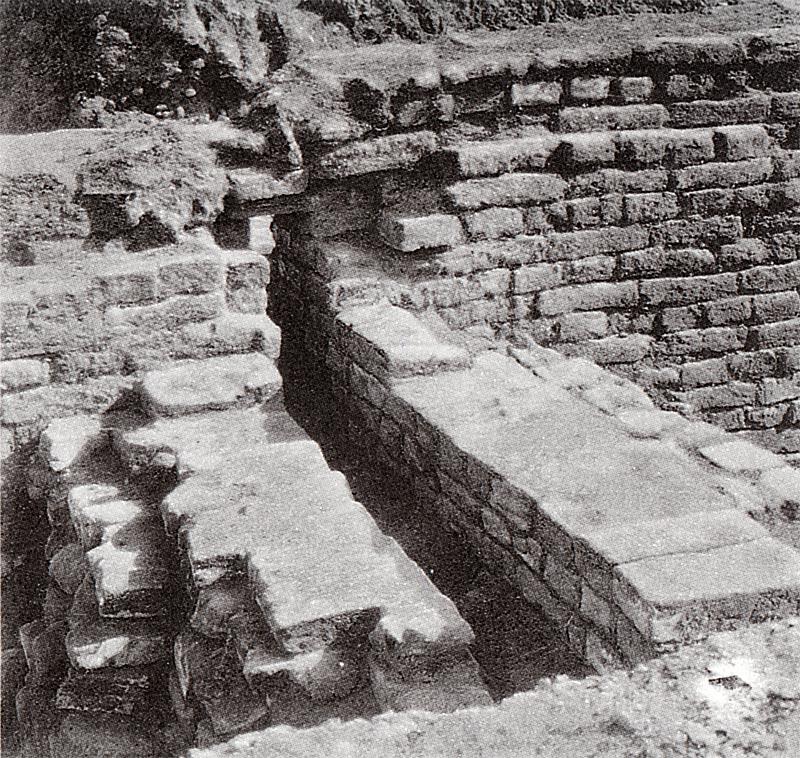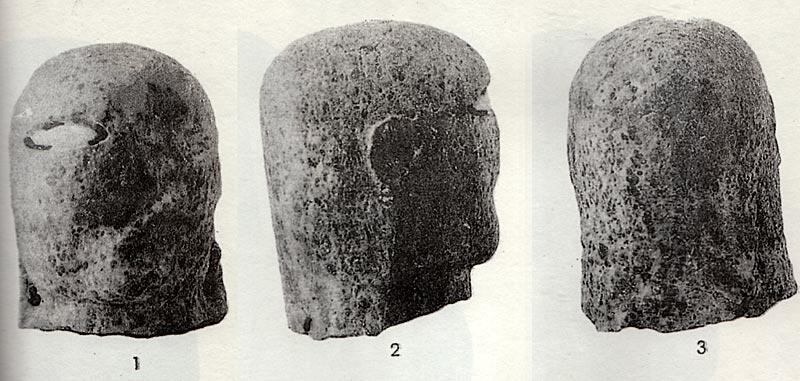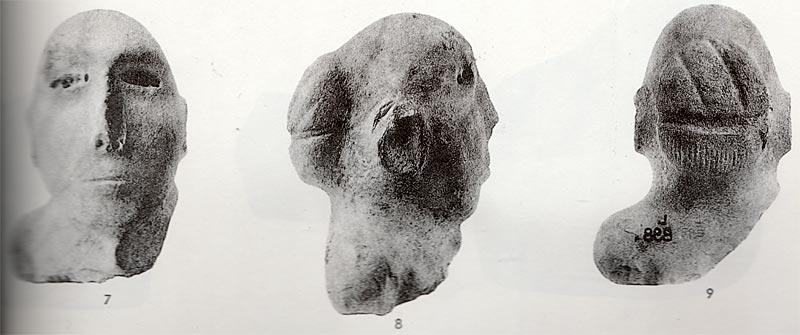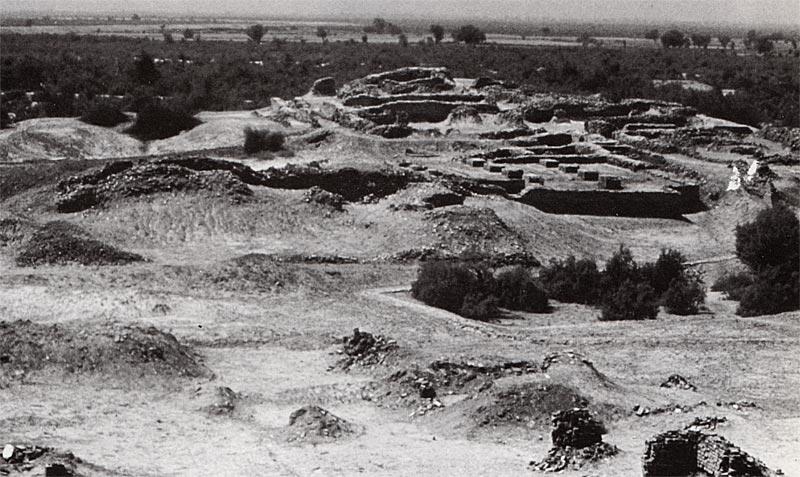February 22nd, 2016
The 3 L-Area Mohenjo-daro Statues: The Seated Nobleman, The Stern Male, The Unknown Woman.
"In January 1927, Mackay began working in L-Area, ca. 28 meters south of the Stupa on the Mound of the Great Bath. He uncovered the so-called 'Assembly Hall' and other architectural remains that are not well understood, even today. He also found three pieces of limestone sculpture: a seated torso (L-950), a reasonably well-preserved bust (L-898) and a very poor, abraded head, possibly of a woman (L-127)." (Indus Age, p. 78)
1. The Seated Nobleman of L-Area as it was excavated. "Seated male figure with head missing (45, 46). On the back of the figure, the hair style can be partially reconstructed by a wide swath of hair and a braided lock of hair or ribbon hanging along the right side of the back. A cloak is draped over the edge of the left shoulder and covers the folded legs and lower body, leaving the right shoulder and chest bare. The left arm is clasping the left knee and the hand is visible peeking out from underneath the cloak. The right hand is resting on the right knee which is folded beneath the body." (Gregory Possehl, Indus Age: The Beginnings, p. 78)." (Plate 2.29 in the book, facing p. 92.)
2. Male Statue . "[The Seated Nobleman was] found above pavement in N.E. corner of Chamber 75 in L-Area. (its datum was 2.5 feet below datum.) Late Period. Material, veined grey alabaster. The figure, which is 11.5 inches high, is obviously that of a male and is dressed in a thin kilt-like garment fastened round the waist. (It is not clear how Mr. Mackay infers the existence of this kilt beneath the outer garment.–[ED.].) Another garment or shawl of thin material is worn over the left shoulder and under the right arm, and appears to hang down over the kilt. The left knee of the figure is raised, but there is nothing to indicate the position of the right foot beneath it. The sculptor, and not subsequent weathering, is responsible for this lack of detail. The left arm is carried around the side of the left knee, so that the hand clasps the front of the knee. This hand is only roughly indicated, and the sculptor evidently was not clear how it should be arranged. Indeed, it is difficult to believe that the same man carved both the arms and hands, for the right arm, though of rough workmanship, shows some power of modeling, whereas the left arm and hand are positively shapeless. (It should not be forgotten that the left arm is hidden beneath the mantle or shawl, while the right arm is bare. It is not to be expected, therefore, that there should be much definition in the modeling of the left arm. Probably the mantle itself was painted, and this would have made a great difference to the apparent uncouthness of the lower part of the figure.) A squarish projection at the back of the head is evidently intended to represent a knot of hair. It is, however, unfinished and shows the chisel marks of the preliminary dressing. There is somewhat more finish about what may be a rope of hair hanging down the back." (John Marshall, Mohenjo-daro, Plate C, 1-3 (L 950), pp. 358-9)
3. The Stern Man of L Area, Mohenjo-daro, L 898. The Lady of L Area, Mohenjo-daro, L 127. [Figures]
4. Chamber 7, L Area where L 950 Male Statue was found
5. Yellow limestone head. [Stern Man of L Area] "Found 2 feet below the surface of the ground in Chamber 77 of L-Area (Its datum level is minus 2.3 feet.) It belongs to the late period. Material, yellow limestone.
This head, which is 7.75 inches high, may present either a male or females, as there is no beard; but the hair is gathered up in a knot at the back of the head in a similar way to the obviously male figure shown in illustration no. 6. This may have been the customary fashion for hair-dressing for me–a fashion which still survives in many parts of India at the present day. A cord of fillet worn round the head serves to keep the know of hair at the back of the head in place.
The arrangement of the hair knot is curious. Two oblique depressions, which run from the right to left across its uppoer portion, apparently mark off three separate twists of hair. A number of vertical lines on the lower portion of the knot suggest strands of hair lying close together." (Marshall, Mohenjo-daro, Plate XCIX, 7-9 (L 898), p. 358)
6. Female head. [Lady of L Area] "Found just below the first pavement of Chamber 100 in L Area. Late Period. This is the badly weathered head of a statue in grey limestone, now 5.7 inches high. It apparently represents a female, for there is no beard, and the hair, which is slightly curly, hangs down the back of the head. The eye beneath the receding brows are long and narrow and the original inlay of the right eye, which is made of a whiter stone than the head, is still in place.
The nose, unfortunately, is missing and the mouth too weathered for us to discern its original shape. That there was once a necklace is suggested by the presence of two holes on each side of the neck, just in front of the hair. The ears are very primitive and a deep ear-hole is drilled in each. (These holes, which are found in all these heads, seem intended for the attachment of some ornament in the middle of the ear and perhaps explain why the ears themselves are left without structural definition.) It is unfortunate that this head is in such a bad state of preservation." (Marshall, Mohenjo-daro, Plate XCIX, 1-3 (L 127), p. 358)
7. General View of L Area by Gregory Possehl

